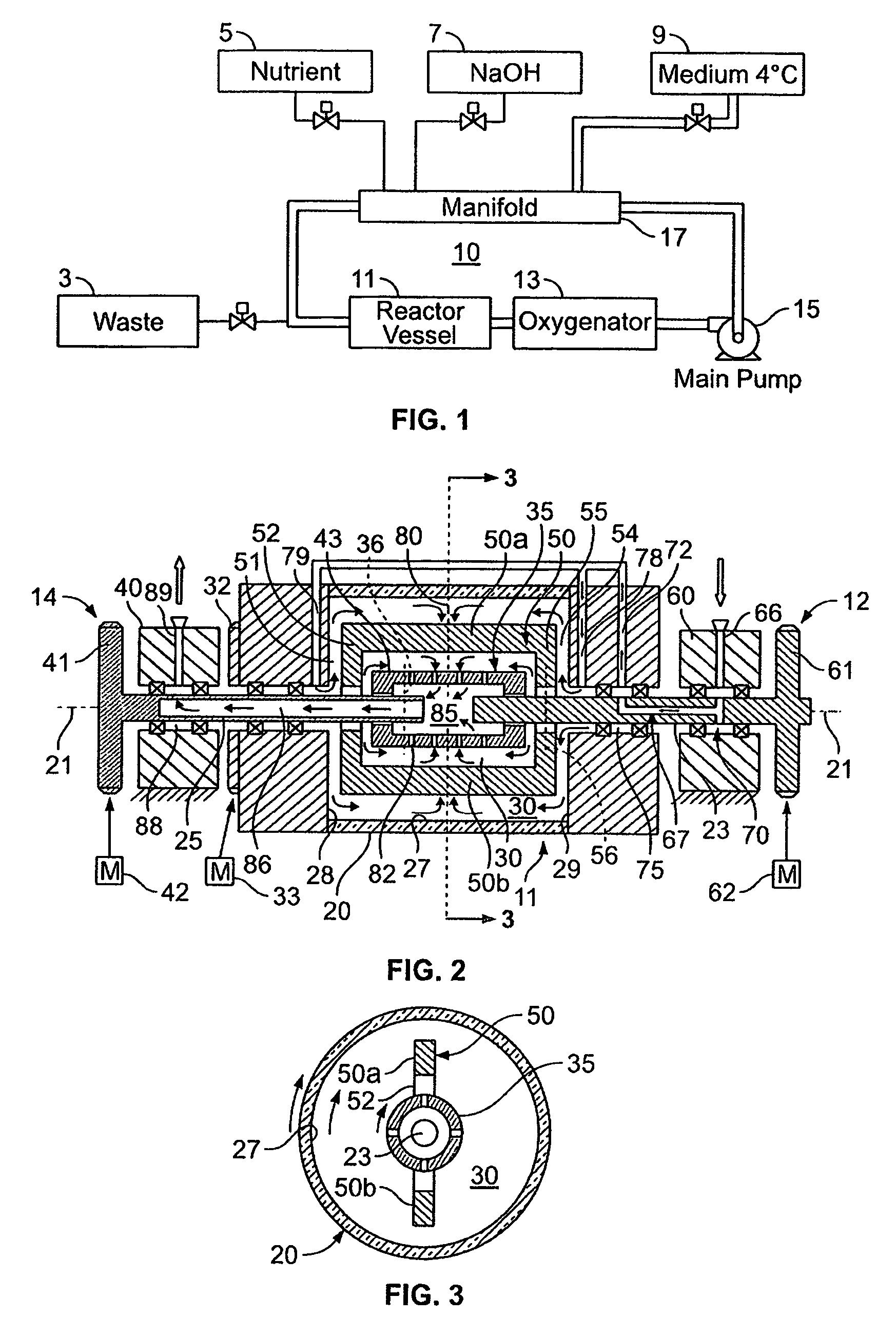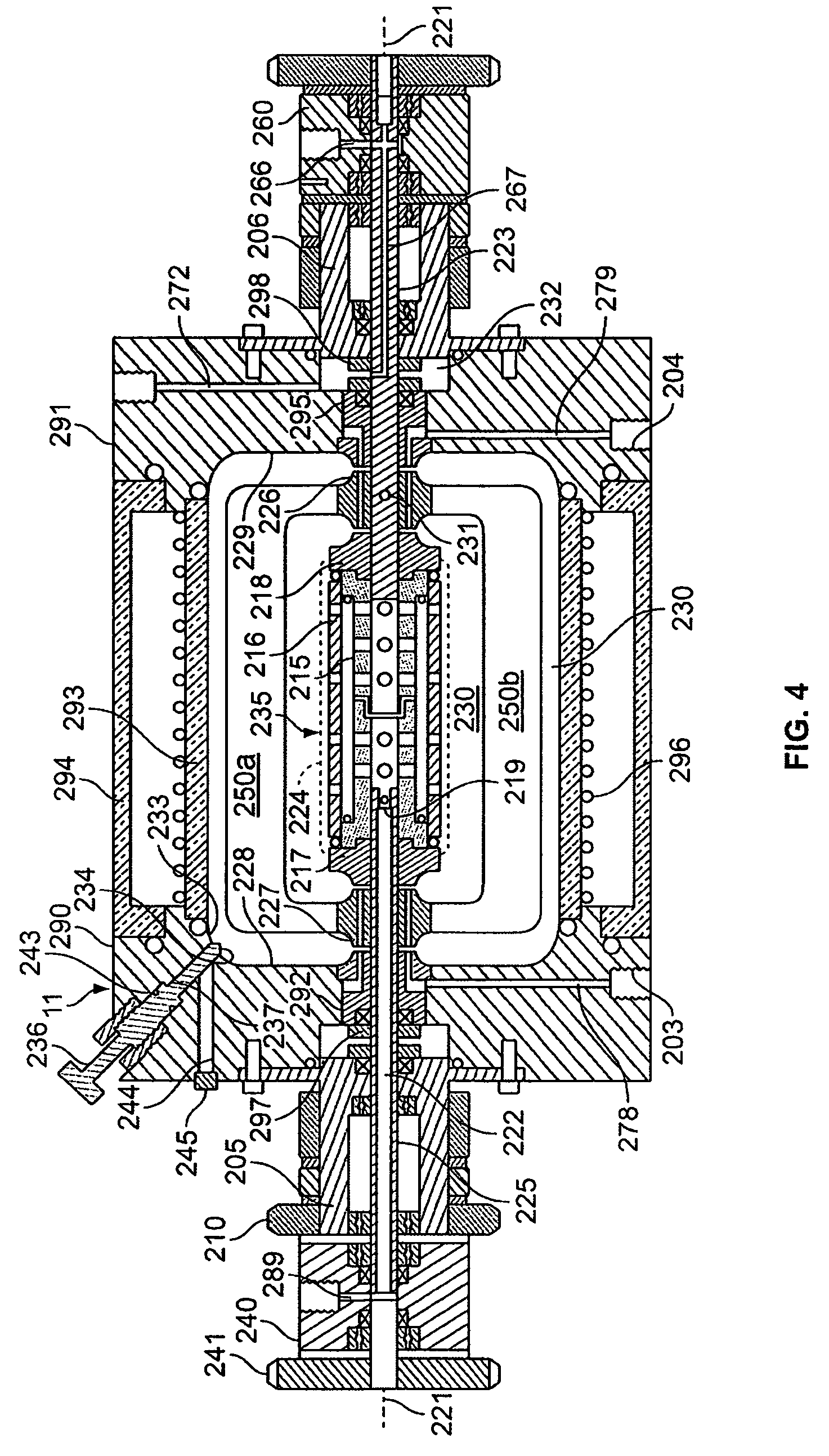Three-dimensional cell to tissue development process
a three-dimensional cell and tissue technology, applied in the field of three-dimensional cell to tissue and maintenance process, can solve the problems of mammalian cells, complex mammalian cell culture, and insufficient development of firm theoretical bases, and achieve the effect of increasing the production rate to commercially significant levels
- Summary
- Abstract
- Description
- Claims
- Application Information
AI Technical Summary
Benefits of technology
Problems solved by technology
Method used
Image
Examples
example i
Preparation
[0062]A 3-dimensional rat bone cell culture was produced in the following manner. The bio-reactor, slow turning lateral vessel (STLV) was prepared by washing detergent and germicidal disinfectant solution (Roccal II) at the recommended concentration for disinfection and cleaning followed by copious rinsing and soaking with high quality deionized water. The bioreactor was sterilized by autoclaving then rinsed once with culture medium.
[0063]The 100 ml. volume STLV was filled with cell culture medium consisting of minimum essential medium (MEM) with Earle's salts, growth supplements, antibiotics and 10% fetal bovine serum. After equilibration for one hour in the CO.sub.2 incubator, the substrate consisting of collagen coated dextian polymer, Cytodex 3 microcarrier beads (Pharmacia Fine Chemicals, Uppsala, Sweden) were suspended in a small volume of culture medium and loaded into the device. An empty syringe attached to one of the sampling ports functioned as a com...
example 2
Formation of “Artificial Tissue” in Free Suspension
Preparation:
[0071]The rotating reactor vessel system (RWPV) consisting of a 500 ml cell culture vessel, a hollow fiber oxygenator, a prototype diaphragm pump, an in-line pH sensor, sample ports and a peristaltic pump for infusion of fresh medium were assembled, sterilized by ethylene oxide (ETO) and aerated for two days. The vessel was then loaded with phosphate buffered saline (PBS) to rinse and remove residual ETO. During this step, a leak was discovered in the oxygenator and unit was replaced using sterile techniques. The system was then loaded with culture medium and placed in the CO.sub.2 incubator. After remaining sterile for at least two days, the RWPV system was loaded with cells and substratum as described below.
[0072]Inoculation
[0073]Cytodex 3 microcarrier beads (Pharmacia Fine Chemicals, Uppsala, Sweden) were reconstituted according to standard laboratory procedures, suspended in Microcarrier Medium (MM), containing 20% f...
PUM
| Property | Measurement | Unit |
|---|---|---|
| magnetic field | aaaaa | aaaaa |
| magnetic field | aaaaa | aaaaa |
| diameters | aaaaa | aaaaa |
Abstract
Description
Claims
Application Information
 Login to View More
Login to View More - R&D
- Intellectual Property
- Life Sciences
- Materials
- Tech Scout
- Unparalleled Data Quality
- Higher Quality Content
- 60% Fewer Hallucinations
Browse by: Latest US Patents, China's latest patents, Technical Efficacy Thesaurus, Application Domain, Technology Topic, Popular Technical Reports.
© 2025 PatSnap. All rights reserved.Legal|Privacy policy|Modern Slavery Act Transparency Statement|Sitemap|About US| Contact US: help@patsnap.com



